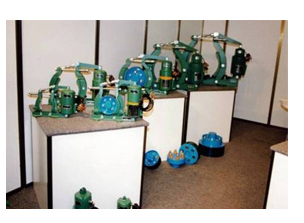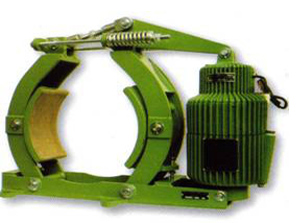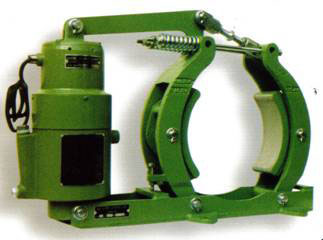MOLSA electro-hydraulic brakes are made with movable brake shoes to operate them with a hydraulic elevator, prompted by AC power that confers great reliability.

MAIN CHARACTERISTICS
- The springs and regulation spindle braking torque are located on the linkage of the brake. Thus, regulation is very simple.
- The brake shoe holders are provided with regulation screws that permit brake shoe balance in relation to the pulley.
- Premium quality brake pads, guarantee a constant friction coefficient up to temperatures of more than 400 degrees.
- The electro-hydraulic elevator which is as fast as the electromagnet, consumes at the start a slightly bigger intensity than when it’s working.


ADVANTAGES USING OUR ELECTRO-HYDRAULIC BRAKES
MOL electro-hydraulic brakes work, for lack of current, with springs action and weight of elevator movable part, which guarantees big safety in the braking.
The use of AC electromagnets produces serious disadvantages that make them inadequate for brakes functioning. The big intensity that they absorb after connection is always very high, so some special precautions must be taken in order to avoid tension falls, that difficult device working conditions.
These intensities also limit the number of procedures, due to the coil winding heating.
Violent shocks that are caused by the elevator structure at the end of each cycle, causing deformations at the magnetic circuit which disable them very quickly.
MOLSA bearing in mind these disadvantages has created a serial of brakes in which the electromagnet has been replaced by an electrohydraulic elevator to solve these problems.
SOME INDICATIONS BEFORE CHOOSING ELECTROHYDRAULIC BRAKES
The brake type election in each case, gives rise to a particular study on the part of the designer, since the static torque, effects of inertia, deceleration time, frequency of braking, etc, have to be borne in mind.
In elevation devices, it is normal to have the braking torque based on the motor torque. Generally, Cb = 1 to 2 Cmotor, being the formula for the torque, based on its power in HP and speed in r.p.m.








